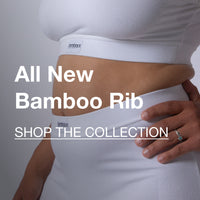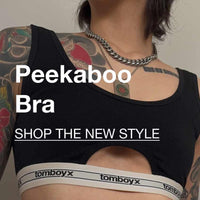How To Find the Right Hoodie: A Buyer's Guide

You know ‘em, you love ‘em –– equal parts comfy and cozy, hoodies are a style that pretty much everyone can get behind. But that doesn’t mean every hoodie is created equal. The ultimate hoodie comes down to a few factors: soft, high-quality fabric, ideal fit, and personal style preferences.
Today, we’re going to go over these factors to help you find the perfect hoodie. Whether it’s loungewear, workout gear, or a part of a casual outfit, this lovely layer is a must-have for anybody who values comfort and convenience in their wardrobe.
What Are the Best Hoodie Materials?
Cotton
Cotton is the go-to with a ton of tops in general. Breathable, soft, and strong, you can’t go wrong with a cotton hoodie or sweater. Cotton has moisture-wicking capabilities, meaning it can absorb sweat, which is great for exercising and lounging alike. Additionally, cotton is insulating, so it will help regulate your body temperature.
One popular variety of cotton in hoodies is french terry fabric. This knit fabric features a looping pattern on the inside with a smooth outer surface. French terry is soft, warm yet not overly heavy, and wrinkle-resistant –– perfect for a casual hoodie.
Cotton-Polyester Blend
There are a couple of benefits to going for a polyester blend over an all cotton or all polyester product. The addition of polyester makes the fabric more durable and elastic.
However, it is not very breathable on its own; that’s why cotton lends breathability and softness. A lot of athletic gear is made of poly-cotton blends for their stretch, comfort, and strength.
Fleece
Fleece can come in different types of fibers, but the most popular ones are cotton, fleece, or a poly-cotton blend. Fleece fabric is plain on one side and features a looped side that has been brushed or raised for a fuzzy texture. Poly-cotton fleece is rich and warm, ideal for warm weather.
Spandex
Spandex is often added to hoodies and other athleisure for extra stretch. You want your hoodie to be comfortable and flexible; that’s where a touch of Spandex really comes in handy. Added elasticity can also contribute to a product's durability, making it better for active wear.
It’s All in the Details: Features Your Hoodie Should Have
Pockets
One of the main attractions of the hoodie is convenience. What’s more convenient than a pocket to carry your essentials in?
The classic kangaroo pouch pocket that sits at the belly of a lot of hoodies is something that many just can’t go without. It’s also a great place to casually rest your hands or warm them in chilly weather.
Drawstrings
Whether or not you prefer drawstrings on your hoodie is up to you. Drawstrings are the lace-like strings that loop around the neck of a hoodie, allowing you to tighten or loosen the hood as you please. They can create some interest to the overall look while allowing you to adjust how your hoodie fits.
Waistband and Cuff Ribbing
Ribbing is that bit of extra, slightly firmer fabric that sits around the wrists and waist of a hoodie. Not all hoodies come with waistband and cuff ribbing.
While some prefer that looser feel, the downside of leaving out this feature is that, over time, a well-worn hoodie can end up fraying at the edges. Proper ribbing with good quality material will increase the longevity and integrity of your hoodie.
What Are the Different Types of Hoodies?
Every day, new products and styles pop up — and we love that innovation.
Here are some of our favorites:
Pullover Hoodie
Pullover hoodies are probably what most people are referring to when they talk about hoodies. They are usually made of medium to heavy-weight fabric, include a pouch in the front, and can come with or without drawstrings. The pullover sweatshirt is an excellent casual layer for a mild day or cool evening.
Zip-Up Hoodie
Zip-Up hoodies have many of the same features as pullover hoodies, with, of course, the addition of a front zipper. This can be helpful when you just want a quick layer that serves the same purpose as a jacket and can be easily removed or tied around your hips at any time. It also has the added bonus of showing off whatever tee you’re wearing underneath.
A happy medium between the hooded pullover and the full-zip hoodie is the half-zip variation.
Sleeveless Hoodie
Most people probably think of a long-sleeved top when they refer to hoodies. However, there are hoodies that have short sleeves and even no sleeves at all. They’re warmer than tank tops, and with the hood and pocket, the no-sleeve sweatshirt offers the best of both worlds.
Sleeveless hoodies are sporty everyday wear, great for warm weather and showing off your biceps when you want something a bit more fashion-forward than a t-shirt.
For the ultimate sportswear getup, pair a no-sleeve hooded sweatshirt with a sports bra or bralette peeking through the arm holes.
Cropped Hoodie
Though they do add warmth, long sleeve cropped hoodies are often more of a fashion statement than a practical option. Most typical hoodies end at the hips or lower, while cropped hoodies can be cropped all the way up to the chest.
This athleisure style is a bestseller with dancers, as it shows off the midriff and creates a dynamic look.
Fitted Hoodie
A fitted hoodie is a slim style that is at least somewhat tailored to your form. It can add a bit of shape while still providing warmth and comfort. As this is a bit more figure-hugging than your average hoodie, many choose to wear it without a layer underneath.
Some joggers or athletes go for fitted variations instead of heavyweight hooded sweatshirts that might not accommodate a heavier workout.
Relaxed Hoodie
The relaxed hoodie is a familiar favorite that can be worn both at home, at the gym, or out and about. This hoodie has a loose, even oversized, fit. While it can be worn on its own, its unique functionality makes it great for layering.
The biggest plus to this style is maximum comfiness. Whether you’re at the skate park or enjoying a Netflix marathon, the relaxed hoodie is here for you.
Fleece Hoodie
Fleece pullover hoodies can either be made entirely of fleece or simply be lined with fleece on the inside. This style is wonderful for cold weather when all you want is a bit of extra coziness. Wear it on a winter walk around the block or snuggled on your couch.
Knit Hoodie
Knit hoodies are a variation on the knit cardigan. Some are heavier than others, and they exist in pullover and zip-up styles. In addition to their cozy feel, the added knit texture can elevate the hoodie look and add a bit of a chic autumn flair.
Hoodie Romper
Some people love hoodies so much that they want to wear them all over! Hoodie rompers are new arrivals that are ever-growing in popularity, and it’s easy to see why. This one-piece hoodie style is super comfortable; many come with a zipper for ease of dress and accessibility, while others feature a drawstring around the hips or waist to create a slight cinch effect.
Colors and Prints
The other thing you want to take into consideration is the color and print. While the typical hoodie often comes in a solid, plain color, many also feature diverse patterns or pops of color.
Overall, tie-dye, camo, rainbow stripe accents, or colorful drawstrings can add a bit of individual flair to your hoodie style. Make a statement and colorblock with two or three solid colors to create a new balance in your wardrobe.
Things To Check Out Before Checkout
Hoodies are a wardrobe staple for those who value comfort and practicality. When you try on a hoodie, you want to feel a sense of ease. Whether you ultimately wear it as athletic gear, loungewear, or a street style fashion statement, comfort is the key word –– so make sure you get one that feels amazing!
Sources:
The Pros and Cons of Cotton Clothing | India Times
French Terry | Types of Cotton Fabrics | The Fabric of Our Lives
How to “Colorblock” Your Outfits | The Acronym





